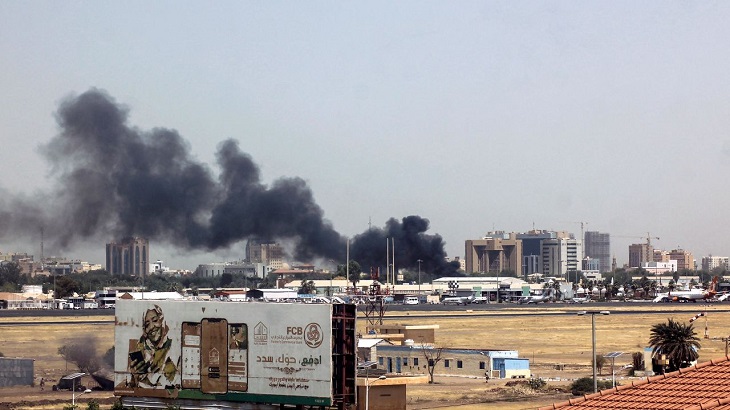Hundreds of families gathered in the West Darfur capital of El Geneina on June 15, plotting their escape from what had become a hellscape of blown-out buildings scrawled with racist graffiti and streets strewn with corpses.
The state governor had just been executed and mutilated by Arab militia groups, leaving civilians with no choice but to flee.
A new CNN investigation led by Chief International Investigative Correspondent Nima Elbagir reveals that what followed was a gruesome massacre, believed to be one of the most violent incidents in the genocide-scarred Sudanese region’s history. The powerful paramilitary Rapid Support Forces and its allied militias hunted down non-Arab people in various parts of the city and surrounding desert region, leaving hundreds dead as they ran for their lives, according to evidence collected by CNN.
CNN analyzed videos, photographs, and satellite imagery, and gathered 11 testimonies from eyewitnesses and survivors of the violence in El Geneina, including aid workers who collected the dead, and a surgeon who treated the wounded in Chad, to piece together what happened.
As the killing continues unabated in Sudan, with reports that the violence is accelerating, CNN’s investigation into atrocities carried out over a single day in June offers a window into the scale of abuses, largely hidden from view.
In the early hours of that morning, residents set off en masse from southern El Geneina, many trying to reach the nearby Sudanese military headquarters where they thought they might find safety. But they said they were quickly thwarted by RSF attacks. Some were summarily executed in the streets, survivors said. Others died in a mass drowning incident, shot at as they attempted to cross a river.
Many of those who managed to make it out were ambushed near the border with Chad, and forced to sit in the sand before being told to run to safety as they were sprayed with bullets.
“More than 1,000 people were killed on June 15. I was collecting bodies on that day. I collected a huge number,” one local humanitarian worker, who asked not to be named for security reasons, told CNN. He said the dead were buried in five different mass graves in and around the city.
“June 15, 16, and 17 were the bloodiest days in Geneina,” said the humanitarian worker, who was part of a city-wide network of aid workers collecting bodies from the streets. He based the death toll on information gathered by the group. “June 15 was the worst of them all.”
Without access to the city, it has been impossible for CNN to independently verify the true toll, but testimonies from body collectors, aid organizations, doctors, and survivors offer clues.
The evidence uncovered by CNN suggests that, behind a curtain of secrecy, the RSF and its allies are waging an indiscriminate campaign of widespread killings and sexual violence, unlike anything the region has seen in decades.
The RSF’s official spokesperson told CNN that it “categorically” denied the allegations.
“To say you were Masalit was a death sentence,” said Jamal Khamis, a human rights lawyer, referring to his non-Arab tribe, one of the biggest in Darfur. Khamis was among those who said that they fled from El Geneina to Chad, surviving a series of RSF and allied militia positions by concealing his ethnicity.
He said he only managed to escape execution because he convinced the fighters that he belonged to the Tagoy ethnic group, whose language he speaks proficiently.
Khamis recalled an 8-year-old boy grabbing his hand, part of the group walking towards the border, rushing to put distance between themselves and the violence.
“When we arrived at Shukri, they captured us,” said Khamis. “They told us to run away. They shot and killed the 8-year-old boy. He was trying to run away, and they shot him in the head.
“June 15 was one of the worst days in all of Darfur’s history.”

